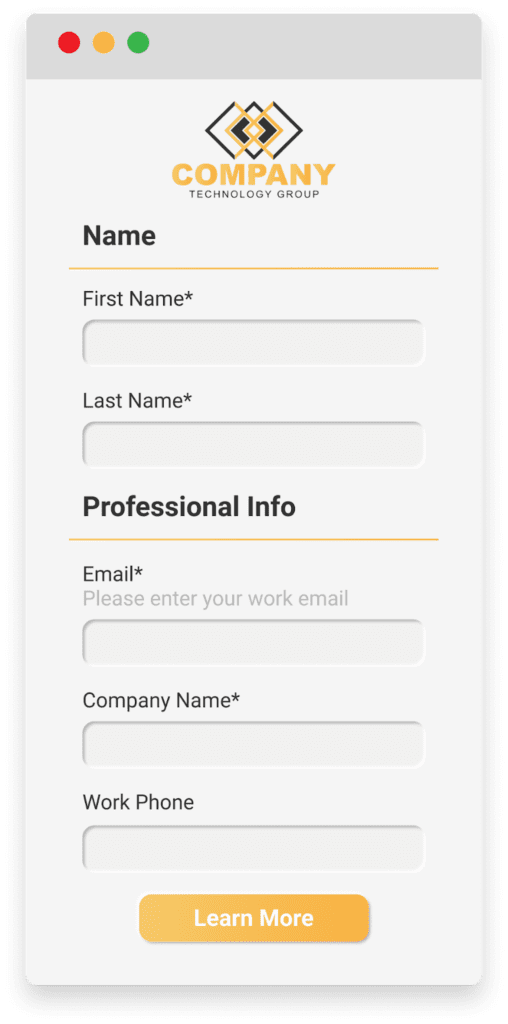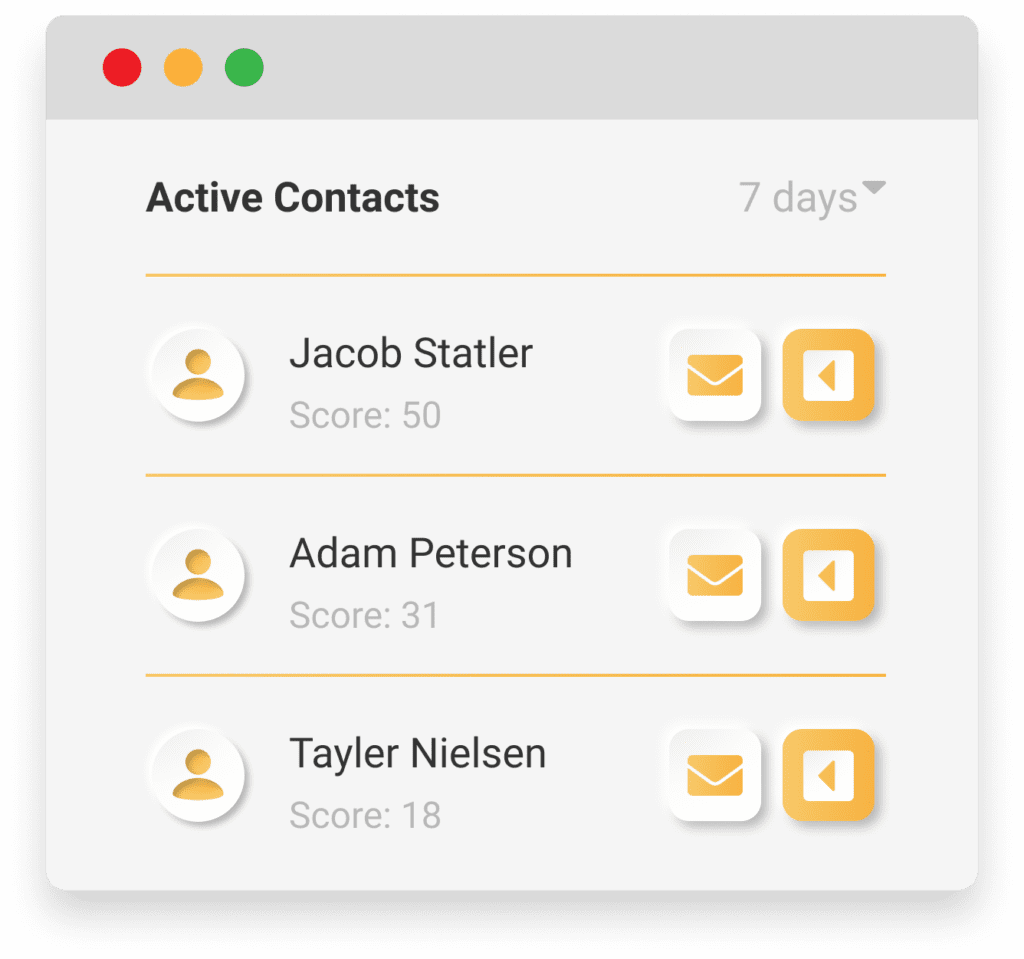Last updated on August 3rd, 2023

This guide explains the different types of CRM data and how to use them for marketing, sales, and contact management.
Leveraging CRM data the right way helps sharpen your campaigns by:
- Tracking what’s working
- Gaining insights on prospect and customer behavior
- Personalizing your marketing and sales approach
- Segmenting contacts based on commonalities
I’ll cover how to use CRM data, the different types, and manage your database better.
Table of contents:
- What Is CRM Data?
- What Is CRM Data Quality?
- How Can You Use CRM Data?: 6 Examples
- Marketing Use-cases
- Sales Use-cases
- Client Database Use-cases (Customer Management)
- A Final Summary Of CRM Data

VipeCloud is the only Automation tool your small business needs to
be the hero to your customers.
With Email, Texting, Social, Suites, Chat, Stories, Video Email & Sign Up Forms fully built-in, we provide you with the perfect platform to grow your business.
15 Day Free Trial – Get started risk free. No CC needed.
What Is CRM Data?

CRM data includes fields, metrics, actions, and numbers in your customer relationship management software.
CRM provides a convenient way of storing contact, marketing, and sales data — but its power lies in how the data is used.
In other words, how are you using CRM data to segment audiences and personalize campaigns?
Say your website is dozens up sign-ups per day:
How are you scoring sign-ups to follow up with those with high buyer intent?
Your campaigns will drastically improve when you use CRM data the right way.
But we have to remember that “data quality” is just as important.
So before we go over how to use your CRM data, let’s cover what quality is and how to keep data clean.
What Is CRM Data Quality?
Data quality in your CRM is the degree to which your data is accurate and useful.
Sometimes small businesses end up using and drawing conclusions from false information.
This can lead to disasters like bounced emails (due to outdated addresses), engaging the wrong contacts, and poor campaigns.
Low-quality data = low-quality sales, marketing, and customer-building efforts.
Low-quality CRM data can mean:
- Outdated information
- Duplicated information
- Poorly formatted information
- Information that was manually entered incorrectly (by a prospect/customer or team member)
- Data syncing errors (e.g., syncing the wrong email senders as a contact in your CRM)
How Do You Keep Your CRM Database Clean?
Here are 9 ways to keep your CRM database system organized and structured:
1. Use unique fields – Reduces duplication of information
2. Use required conditions – Prevents crucial information from missing
3. VipeCloud’s email verification – VipeCloud’s email verification lets you check if addresses are deliverable, helping you maintain your sender score by drastically reducing bounce rates.
4. Establish data entry practices – Train team members on data entry protocols to reduce the chances of bad data entry on their behalf.
5. Keep the essential form fields – Having too many fields on your different forms can lead to some contacts having more information than others. Sticking to the most important helps reduce this.
6. Ask contacts about updated information – It’s common for leads, customers, and vendors to change their contact information. You can set reminders or automation to ask for contact updates.
7. Remove old leads – Old leads can take up space in your CRM database. Be sure to remove them from time to time.
8. Keep formatting consistent – Sometimes, names get entered with inconsistent capitalization, which can show up in your email and text campaigns when you use name fields. Making sure that formatting is standard will ensure campaigns aren’t negatively affected.
9. Update your client database routinely – Having routine updates helps your contact database information remain usable year-round. This is especially great for removing unwanted addresses that were synced into your database
Better data structure means more productivity across your team and more effective campaigns.
Next, let’s cover how to use CRM data to its best.
How Can You Use CRM Data?: 6 Examples
Below are the types of CRM data and applicable use-cases for them when you use a CRM like VipeCloud.
Marketing Use-Cases
1. Email Marketing Data
Email marketing data are metrics that track interactions.
You’ll typically find:
- Opens
- Link clicks
- Replies
- Bounces
- Attachment downloads
- Unsubscribes
The data gathered from your email marketing can help you make improvements and find patterns.
For instance, you may get more attachment downloads when a call-to-action is added than when there isn’t one.
Or perhaps unsubscribes increase with your longer-form emails. In this case, you can send shorter emails, add more visuals, or change the type of content you send altogether.
The takeaway is that email data gives you insights to improve campaigns and A/B test the ones you’re unsure of.
2. Form Data

Forms help gather information on leads which can be stored for future use.
VipeCloud lets you create forms with ease along with a landing page for your traffic to visit.
The information entered gets added to the contact’s profile or updated if they’re already in your database.
Forms also let you gather performance data.

Performance data deals with how your forms were interacted with (similar to email).
Here’s what VipeCloud’s form analytics tracks for you:
- Form views
- Form completions
- Clicks
- Video watched
This data will tell you how well your forms perform and what you can modify.
For instance, if your forms are getting a ton of views but low completion, you could:
- Reduce the number of fields to the most important ones.
- Keep only your most important information as “required” fields.
Sales Use-cases
3. Contact scoring

Contact scoring is when companies rank their most valuable prospects based on a number system.
“Valuable prospects” are simply people that show the highest buyer intent and fit buyer personas the best.
Contact scoring lets you fuse explicit data (i.e., job title, company size, etc.) and implicit data (i.e., buyer behaviors) to pinpoint which leads your reps should focus on.
It boosts sales productivity since time isn’t wasted on low-interest leads.
With VipeCloud, sales teams can also use contact scoring to track website activity and give points to high-value actions.
For example, more points are given to a lead that books a meeting on your scheduler page.
As you can see, the implicit and explicit data you have on your prospects makes identifying who to sell to easier.

4. Sales Team CRM Dashboard
CRM dashboards house data around team activity.
Sales leaders can see how campaigns and team members perform from a bird’s eye view.
The insights collected can improve sales decision-making.
Here are just a few crucial sections that sales leaders should track:
- Active Users – Shows system utilization from team members (e.g., contacts engaged, accounts engaged, contacts added, accounts added, emails sent, tasks completed.)
- Opportunities By Stage – A view of your entire team’s team and the number of opportunities each person has in what stage. You can switch between multiple pipelines to see opportunities in each pipeline. You can also edit cards to display primary contacts, the value of the deal, the last contact date, and more.
- Sales Velocity – How fast deals are closing, broken down by pipeline and user.
- Task By Type – Showing tasks completed. This is useful for customer service, sales, and marketing departments. You can also add custom task types (for example, text messaging.
Client Database Use-cases (Customer Management)
5. Contact Segmentation
Contact segmentation lets you group contacts by commonalities or campaign objectives.
Based on engagement data, you can create a unique list and add or remove contacts from that list.
Here are some examples:
- Add or remove contacts who have already received an email
- Add or remove contacts who’ve opened an email
- Add or remove contact who’ve replied to an email

Segmentation is how small businesses better personalize their campaigns.
It’s proven that audiences resonate more with messaging that matches their interests or behaviors.
Here are other forms of contact segmentation you’ll find with VipeCloud:
- Tags
- Position in pipeline
- Forms submitted
6. Custom Fields & Merge Fields
Custom fields are unique placeholders created by you.
They’re made by naming your field and selecting the type of data you want it to intake:

You can create custom fields based on your company/industry terminology and merge them into your email and text message templates.
So, for instance, say a SaaS company wants to create a lead generation form for people interested in their sales software.
They’ll have standard fields like:
- First & last name
- Email address
- Phone Number
And can create custom fields like:
- Company Role (Dropdown variable)
- Estimated number of seat members (number variable)
- Company website (Link variable)
This SaaS company can store this information in their CRM database and later use their custom fields as merge fields in their email templates.
For prospects in their pipeline, their emails can mention the company role that signed up and how the software can support the number of seat members the company will have.
The email campaign was personalized and created a relevant sales touchpoint thanks to CRM data.
A Final Summary Of CRM Data
CRM data lets you create high-ROI campaigns and make better decisions when your information is accurate.
It covers fields, behaviors, activity, metrics, and customer information found everywhere in your CRM.
VipeCloud is a robust sales and marketing CRM built to house the data that makes campaigns personalized and effective.
If you’d like to see CRM data use-cases for your company, feel free to request a demo and see VipeCloud in action.
Want to try VipeCloud’s Sales and Marketing Suite yourself?

Leave a Reply